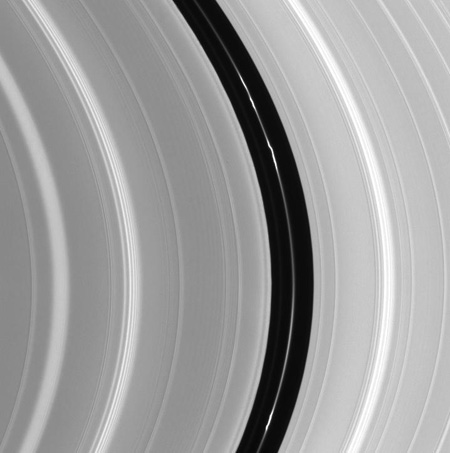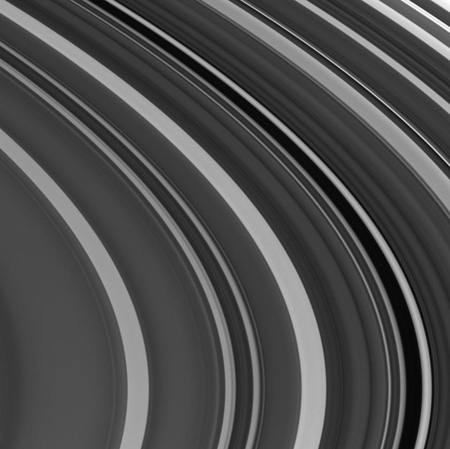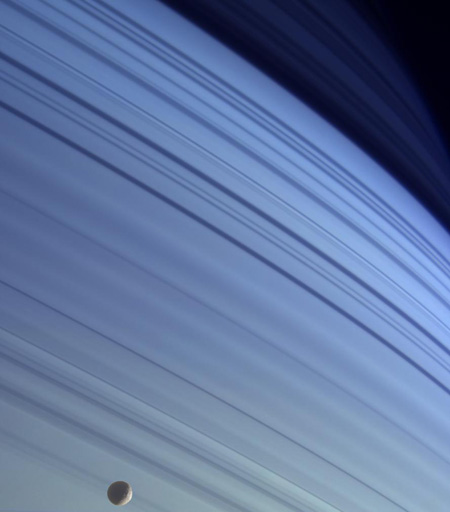From
Earth, only three distinct rings are visible:
the A, B and C rings. The Cassini gap is also
visible in larger
telescopes, but we now know that
this gap is not really a gap at all. More information can be found on the Saturnian Rings Fact Sheet.
There are 18
components to Saturn's ring system, from out to in:
- E Outer Edge
- E Inner Edge
- G Outer Edge
- G Inner Edge
- F Ring
- A Outer Edge
- Keeler Gap
- Encke Gap
- A Inner Edge
- Cassini Division
- B Outer Edge
- B Inner Edge
- C Outer Edge
- Maxwell Gap
- Titan Ringlet
- C Inner Edge
- D Outer Edge
- D Inner Edge
However, in reality there are thousands of
individual ringlets that seem to form the larger
ring patterns.

The rings look solid because they reflect 80%
of the light that it receives but the rings are composed of dusty and icy
particles in a variety of sizes from 1 cm to 5
meters with an average of 10 cm. If all the
particles coalesced to a single body, and object
of only 100 km in diameter would form.
Here is a portrait of the entire ring system:

The rings around Saturn (and all of the other
gas giants) because the particles exist within
the Roche Limit - which extends 2.45 times the
radius of the central body. The rings exist in a
location where gravity of the planet will not
allow the particles to coalesce but far enough
not to fall towards the planet. As a comparison,
our
Moon, the moons of
Jupiter and Saturn exist
outside the Roche Limit.
Here is a nice close-up of the Enke Gap:

The gap is actually the
orbit of the moon
Pan. A moon that is in
orbit with the rings help
the rings maintain their near perfect circular
shape. This type of moon is called a shepherd
moon. Here is a nice close-up of the outer C-Ring:

Another close-up of the C-Ring shows just how fine
the particles of the ring can be:

The rings of Saturn are no doubt one of the most
beautiful objects in the heavens. Be sure to keep
watch of the
Cassini-Huygens webpage for updates photographs
and data.
To wrap up the Rings segment, I'd like to share a
favorite from the Cassini probe:

This image shows the rings of Saturn in true color,
with Mimas in the foreground.
Back to Top |

